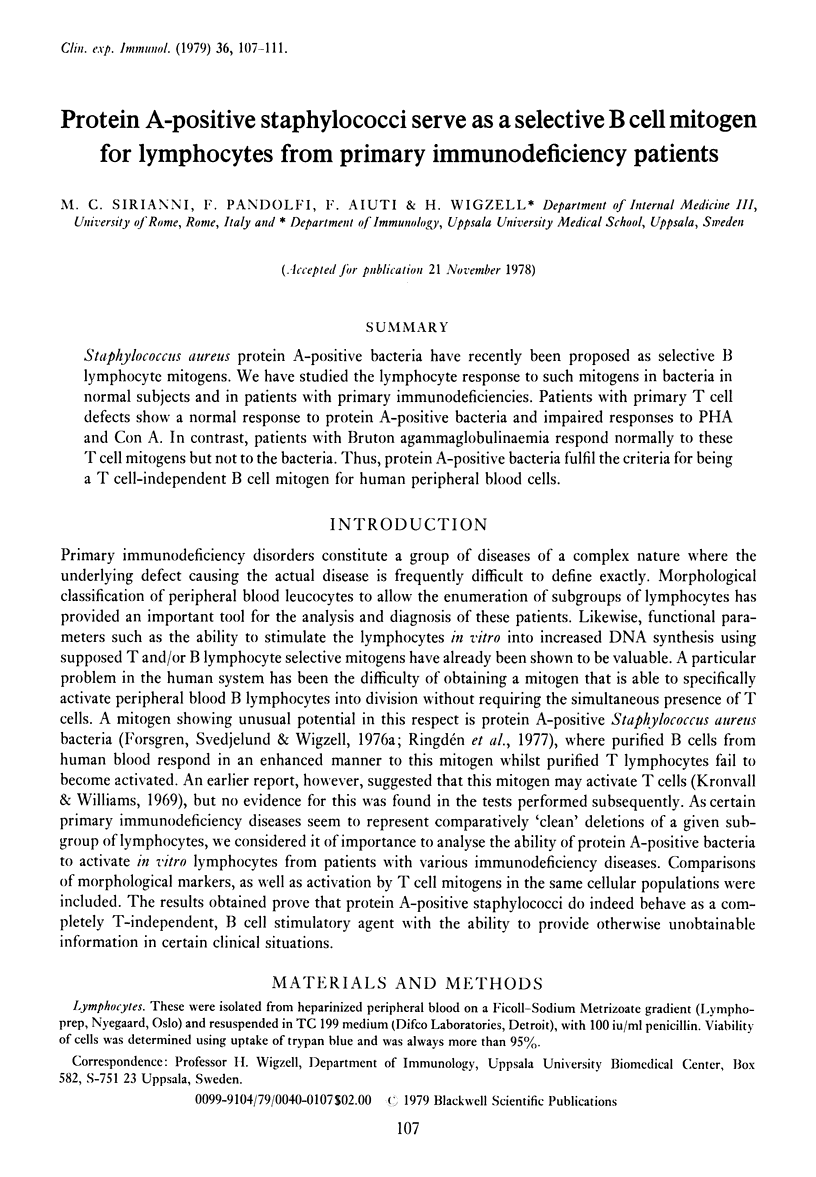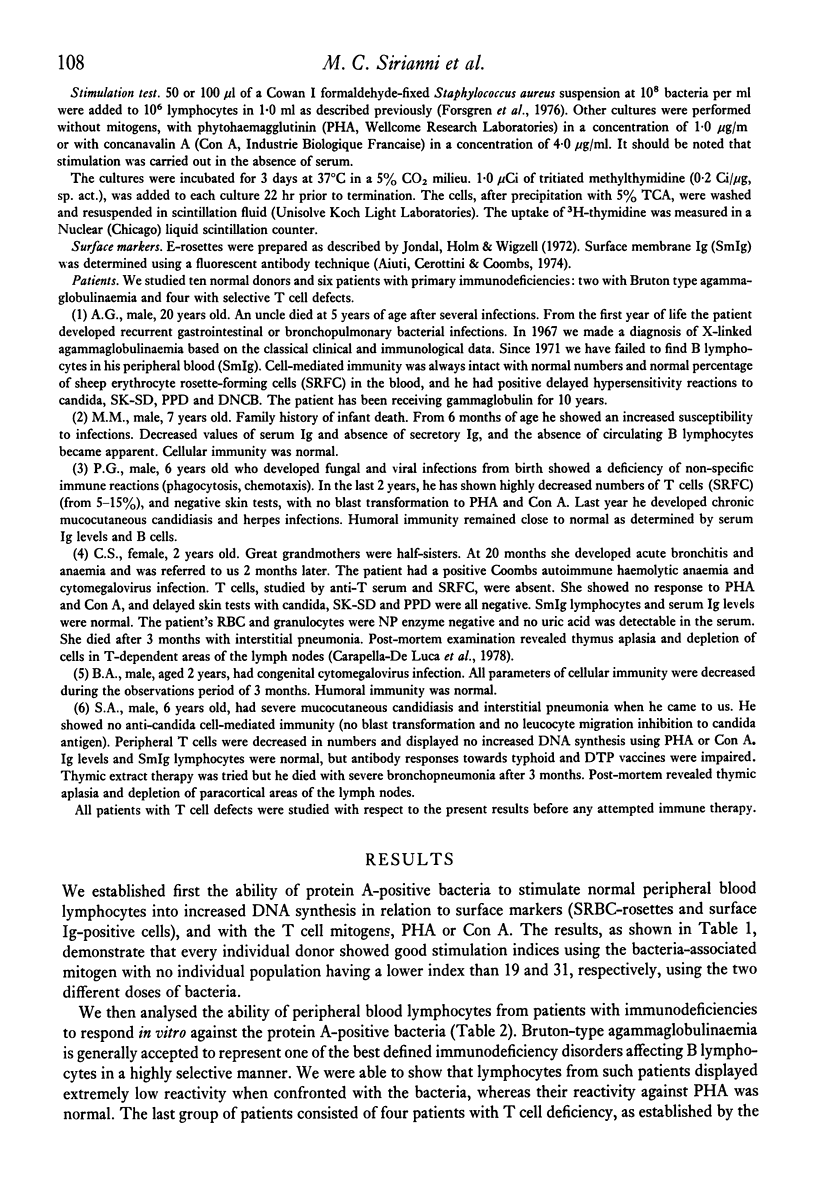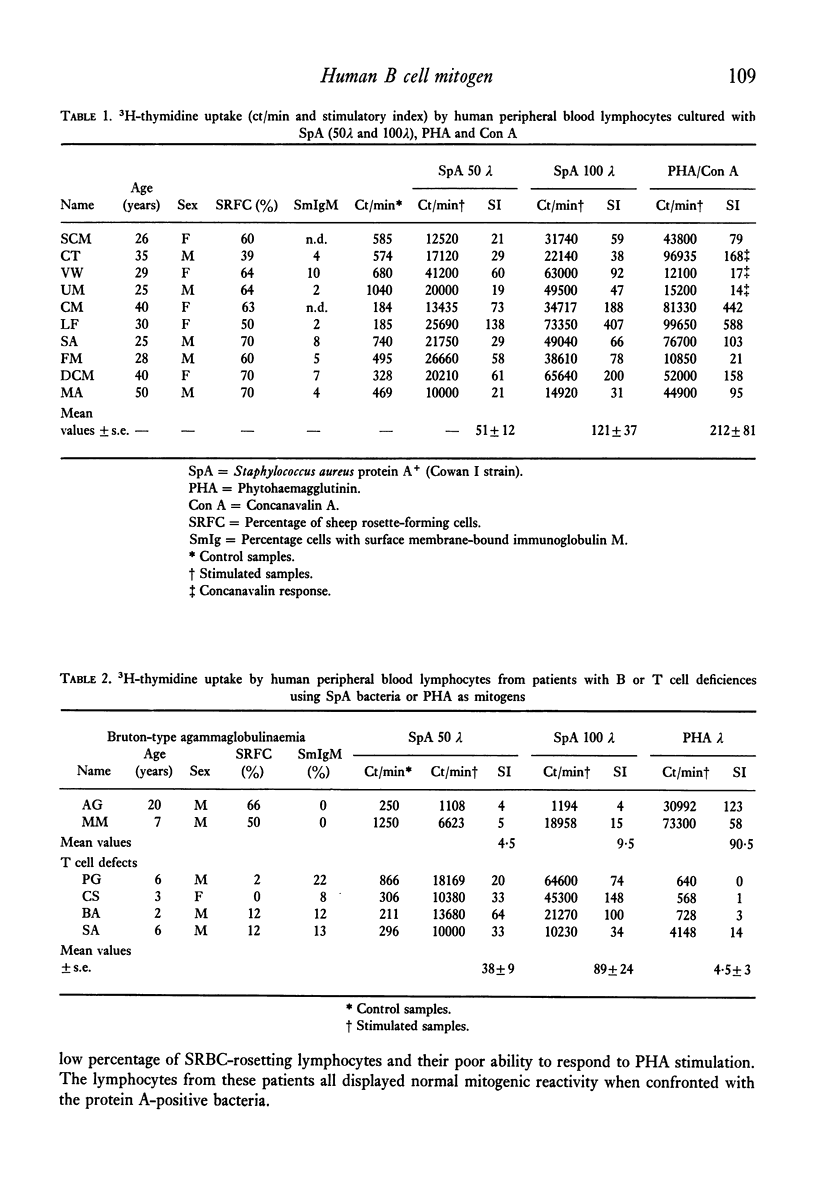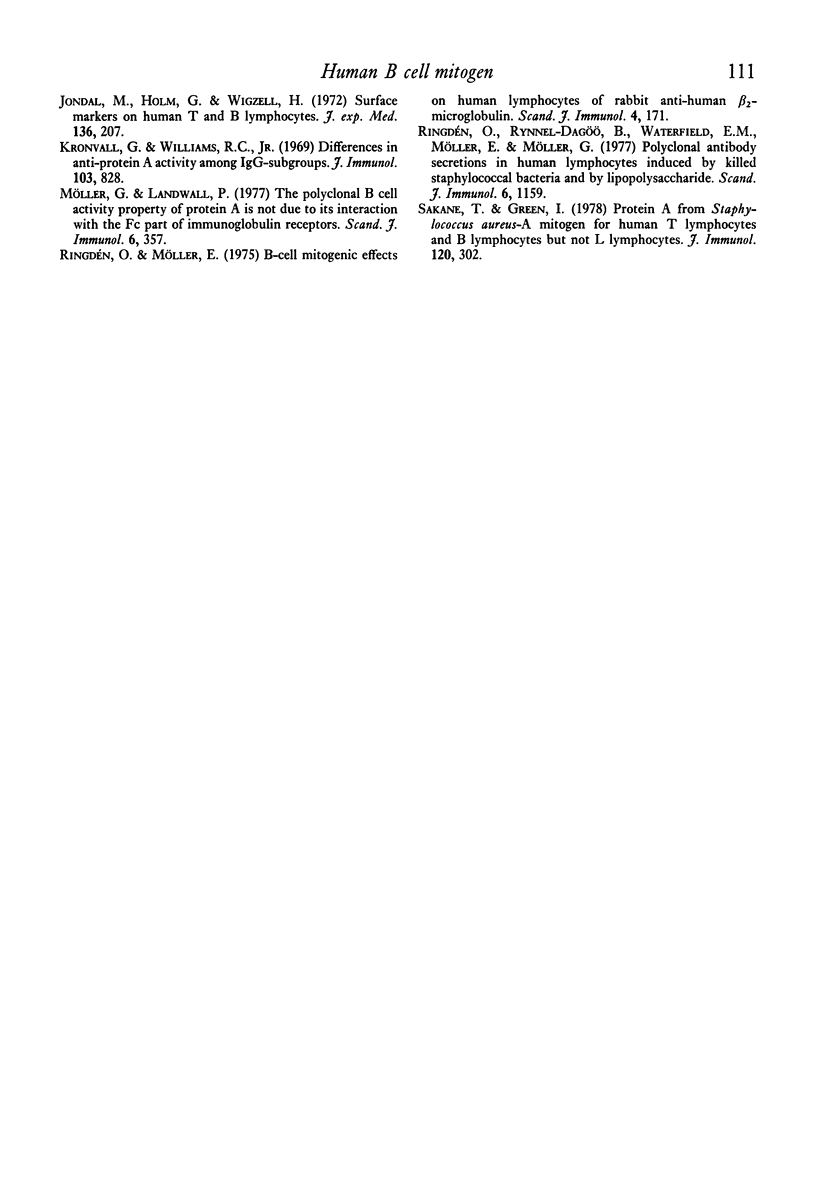Abstract
Staphylococcus aureus protein A-positive bacteria have recently been proposed as selective B lymphocyte mitogens. We have studied the lymphocyte response to such mitogens in bacteria in normal subjects and in patients with primary immunodeficiencies. Patients with primary T cell defects show a normal response to protein A-positive bacteria and impaired responses to PHA and Con A. In contrast, patients with Bruton agammaglobulinaemia respond normally to these T cell mitogens but not to the bacteria. Thus, protein A-positive bacteria fulfil the criteria for being a T cell-independent B cell mitogen for human peripheral blood cells.
Full text
PDF




Selected References
These references are in PubMed. This may not be the complete list of references from this article.
- Bloom B. R., Senik A., Stoner G., Ju G., Nowakowski M., Kano S., Jimenez L. Studies on the interactions between viruses and lymphocytes. Cold Spring Harb Symp Quant Biol. 1977;41(Pt 1):73–83. doi: 10.1101/sqb.1977.041.01.011. [DOI] [PubMed] [Google Scholar]
- Forsgren A., Svedjelund A., Wigzell H. Lymphocyte stimulation by protein A of Staphylococcus aureus. Eur J Immunol. 1976 Mar;6(3):207–213. doi: 10.1002/eji.1830060312. [DOI] [PubMed] [Google Scholar]
- Identification, enumeration, and isolation of B and T lymphocytes from human peripheral blood. Report of a WHO-IARC-sponsored workshop on human B and T cells, London, 15-17 July 1974. Scand J Immunol. 1974;3(5):521–532. [PubMed] [Google Scholar]
- Janossy G., Greaves M. F. Lymphocyte activation. I. Response of T and B lymphocytes to phytomitogens. Clin Exp Immunol. 1971 Oct;9(4):483–498. [PMC free article] [PubMed] [Google Scholar]
- Jondal M., Holm G., Wigzell H. Surface markers on human T and B lymphocytes. I. A large population of lymphocytes forming nonimmune rosettes with sheep red blood cells. J Exp Med. 1972 Aug 1;136(2):207–215. doi: 10.1084/jem.136.2.207. [DOI] [PMC free article] [PubMed] [Google Scholar]
- Kronvall G., Williams R. C., Jr Differences in anti-protein A activity among IgG subgroups. J Immunol. 1969 Oct;103(4):828–833. [PubMed] [Google Scholar]
- Möller G., Landwall P. The polyclonal B-cell-activating property of protein A is not due to its interaction with the FC part of immunoglobulin receptors. Scand J Immunol. 1977;6(4):357–366. doi: 10.1111/j.1365-3083.1977.tb00405.x. [DOI] [PubMed] [Google Scholar]
- Ringdén O., Rynnel-Dagö B., Waterfield E. M., Möller E., Möller G. Polyclonal antibody secretion in human lymphocytes induced by killed staphylococcal bacteria and by lipopolysaccharide. Scand J Immunol. 1977;6(11):1159–1169. doi: 10.1111/j.1365-3083.1977.tb00355.x. [DOI] [PubMed] [Google Scholar]
- Ringeén O., Möller E. B-cell mitogenic effects on human lymphocytes of rabbit anti-human beta 2-microglobulin. Scand J Immunol. 1975;4(2):171–179. doi: 10.1111/j.1365-3083.1975.tb02614.x. [DOI] [PubMed] [Google Scholar]
- Sakane T., Green I. Protein A from Staphylococcus aureus-a mitogen for human T lymphocytes and B lymphocytes but not L lymphocytes. J Immunol. 1978 Jan;120(1):302–311. [PubMed] [Google Scholar]


